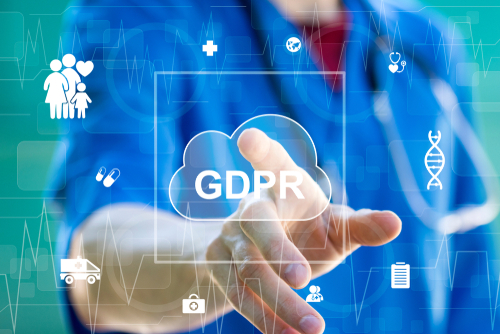GDPR and cloud computing: how to be compliant?
The General Data Protection Regulation… is a regulation that worries many businesses. Add to that cloud computing, and you have a complex but essential cocktail for data management today. How can these two worlds be reconciled without losing control or risking heavy penalties?
In this article, we'll dive into the heart of this issue. Our goal: To provide you with a clear, practical, and comprehensive overview of what GDPR compliance entails in a cloud environment, and to provide you with the keys to achieving it with complete peace of mind.

The main challenges of the cloud in terms of GDPR
- Data localization
Where is your data stored? In Europe? In the United States? In India? GDPR requires that data remain within an appropriate legal framework. This quickly becomes a headache if your cloud provider replicates data across multiple countries.
- Data control and ownership
In the cloud, your data is no longer physically at your home. So you need to have clear guarantees on what the provider can or cannot do with this information.
- Data transfers outside the EU
Transferring data outside the EU is not prohibited, but it is strictly regulated. The destination country must offer an adequate level of protection or standard contractual clauses must be in place.
- Security of data hosted in the cloud
A hack, a leak, a bug… And it’s a disaster. The GDPR requires "appropriate" security measures, which may include the encryption, redundancy, monitoring…
GDPR Legal Obligations for Cloud Services
- The role of the data controller and the processor
If you use a cloud service, you are the data controller, and the provider is a subcontractor. It's up to you ensure that it complies with GDPR obligations.
- The DPO (Data Protection Officer)
Some companies must appoint a DPO. He will be a key contact in managing relationships with cloud providers and in theaudit of treatments.
- The treatment register
You must identify all data processing, including that entrusted to cloud providers.
- The principle of data minimization
Store only what is strictly necessary. The more data, the greater the risk.
Choosing a GDPR-compliant cloud provider
The criteria for selecting a service provider
Server locations in Europe
GDPR compliant contractual clauses
Clear privacy policy
The GDPR subcontracting contract
It must specify:
The purpose and duration of the processing
Data types
Security obligations
The right to audit
Best practices to ensure GDPR compliance
- The implementation of internal procedures
Formalize your practices: consent, access, rectification, deletion procedures, etc. The more square you are, the better.
- Employee training
Educate your teams! One poorly informed employee is a guaranteed violation.
- Data Breach Management
If a leak occurs, you have 72 hours to notify the CNIL. Have a incident response plan is vital.
- Impact analysis (PIA/DPIA)
For certain sensitive treatments, it is necessary to carry out a privacy impact analysisThe cloud is no exception.
Tools to ensure compliance
- Data encryption
THE encryption is essential. It protects your data even if it falls into the wrong hands.
- Audit and traceability tools
Keep an eye on who does what, when, and howThis is the key to reacting quickly in the event of a problem.
- Strong authentication and access management
Exit the password "123456". Make way for the double authentication, to user roles, and to the regular review of access rights.
The GDPR isn't just a sign-and-forget document. It's an ongoing commitment, especially in an environment as dynamic as cloud computing. But with the good tools, good practices and good partners, you can turn this constraint into a competitive advantage.






